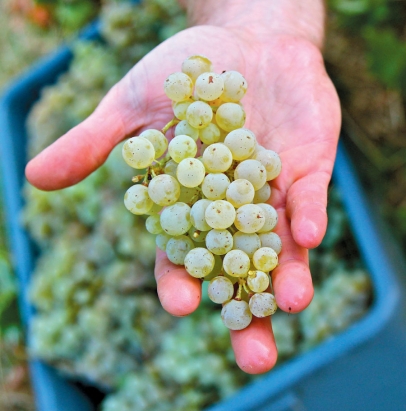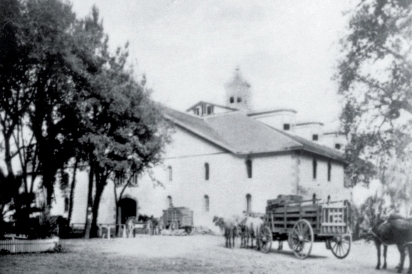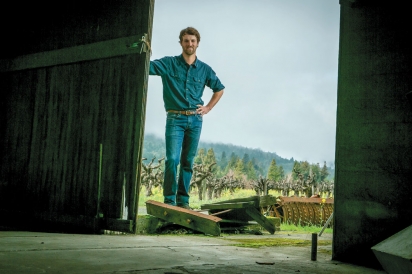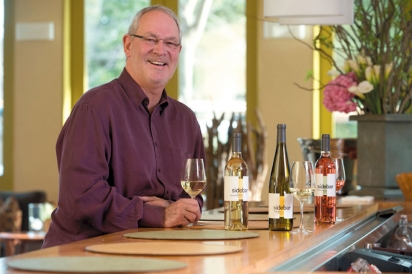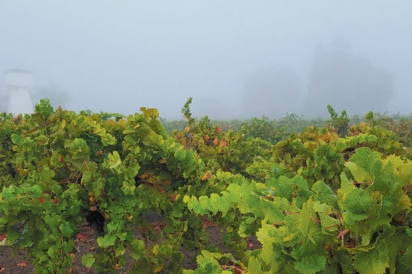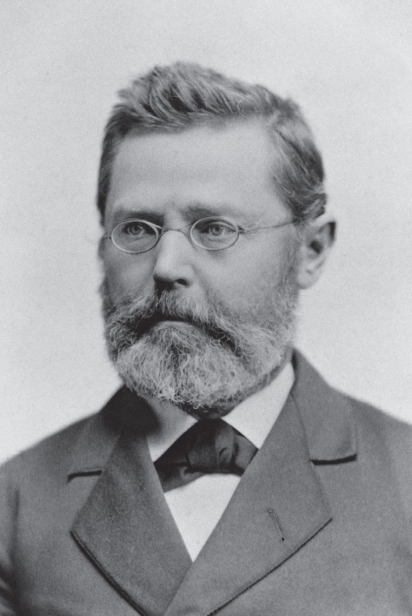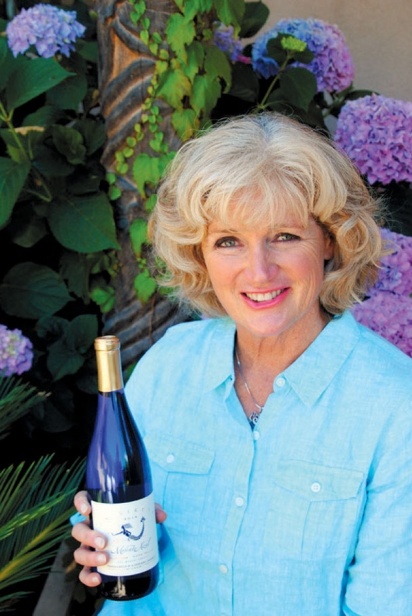German Roots Run Deep In California Wine Country
Contemporary Winemakers Honor Ancient Traditions
Beringer, Gundlach, Bundeschu, Schram and Krug—all iconic Wine Country names today—were among the pioneering German families who came to California in the 1800s. They, and hundreds of other lesser-known Germans, were instrumental in developing Napa and Sonoma vineyards, importing and planting vines and rootstocks from Europe, building vinification and storage facilities, and in distributing the wine they and their neighbors made.
The German immigrants who were part of creating the region’s emerging wine industry came from different regions of Germany and from all walks of life. They were entrepreneurs, financiers, merchants, hoteliers, barbers and academics.
Some came to build a new life or for adventure, or to make a fortune in California’s Gold Rush. Others were leaving behind the political upheavals of the German Revolution of 1848 and Franco-Prussian War of 1871.
Charles Krug was jailed in his native Germany for writing liberal, revolutionary pamphlets. He escaped and came to San Francisco in 1853 to take up the editorship of a German-language newspaper. Later he was to buy land and plant vineyards first in Sonoma, then Napa.
Charles Schram left Germany at 16, and although he came from a winegrowing region along the Rhine River, he was trained as a barber and practiced that trade even while planting his vineyard and making wine in California.
Jacob Gundlach, co-founder of Rhinefarm in Sonoma, was the son of a Bavarian hotel owner and winegrower. His first venture in the New World was a Bavarian-style brewery in San Francisco.
One of Gundlach’s partners in Rhinefarm was Emil Dresel, the son of a famous champagne producer in Weisenheim, Germany, but trained as an architect. Emil arrived in America in 1849, following his winegrower brother, Julius, a liberal who had fled the failure of the Revolution of 1848. Lore has it that Emil carried in his luggage vine cuttings, most likely the first Riesling and Sylvaner in the States. Julius eventually inherited Emil’s share of Rhinefarm. Charles Bundeschu, from Mannheim, Germany, joined Gundlach at Rhinefarm in 1868.
Eugene W. Hilgard, whose lawyer father left Germany with his family for political reasons, returned to Germany and graduated from Heidelberg University in 1853, before coming back to the United States. He went on to become the first professor of agriculture at the University of California in Berkeley and a proponent of using scientific methods in viticulture and enology to produce high-quality wine from California-grown grapes.
Perhaps the best known of all the early German immigrants to Wine Country were the Beringer brothers, Frederick and Jacob, from Mainz. In 1875, they bought 215 acres in St. Helena and started one of California’s earliest wineries, Beringer Brothers. On arriving in the area, Jacob was hired as cellar superintendent at the nearby Krug Winery, where he worked directly with Charles Krug. As the brothers’ winery prospered, Frederick built a large mansion on the property in the style of those of the brothers’ homeland. Rhine House, a historical monument and integral part of the winery, is also an architectural reminder of the importance of German immigrants to California wine history.
Ultimately, German wines—including Riesling, which was planted extensively by the early Germans, along with other varietals—were not destined to produce the defining wines of Napa and Sonoma. That honor would go to Cabernet Sauvignon and other non-German varietals.
Deep Roots Grow Strong Shoots
But, like all deep roots, the German roots of Napa and Sonoma remain, and are still putting up shoots.
Large wineries, like Trefethen Family Vineyards, Smith-Madrone and Chateau Montelena Winery, continue to make dry Rieslings.
Chateau Montelena, formerly the historic Hillcrest winery founded by Alfred Tubbs, who, according to wine historian Ernest Peninou, had Albert Schram as his wine advisor, produces a Riesling now with grapes from Potter Valley. “I can’t think of another variety that can transcend the disparate stylistic nuances in wines across regions and cultures with such purity and, at the same time, diversity,” says Matt Crafton, winemaker at Chateau Montelena, in his tasting notes about the wine.
Heidi Barrett, co-owner with her husband, Bo Barrett, of Chateau Montelena, has her own label as well, La Sirena, and here, too, there is a German connection. In a very distinctive, slender blue bottle, you’ll find her dry, amazingly nuanced Muscat, Moscato Azul, made from a neighbor’s Muscat Canelli grapes, and her own newly planted Muscat Canelli. Barrett attributes her desire to make a Muscat to her period of living with a German winemaking family and accompanying the winemaker as he blended his wines, and the discovery that an elegant, balanced wine could be made of any grape, red or white. “Some restaurants have fun pairing this wine. At Yountville’s Bottega, Michael Chiarello pairs it with chilled asparagus, a tradition in the Piedmont area of Italy,” Barrett tells me. Personally, I can also recommend it with blue cheese.
Alison Crary Rodriguez, the co-founder and winemaker at Edelweiss Wines, received her winemaking training at Germany’s famous Geisenheim University, near Mainz. She has taken on an old-vine Riesling vineyard in Napa’s Carneros district, and is making Riesling in the dry style. “Producing these wines is like walking a tightrope,” she says. “The aromas are coming from the grapes and the vineyards themselves. You have to grow them right to get the aromas.”
Rory Williams, owner and winemaker at Calder Wines, has also championed an old-vine Riesling vineyard, part of the historic Rossi vineyard in Rutherford. “It’s a small block, only 418 vines,” he says. “It used to be a larger block, but got planted over. I’ve had to hold the bulldozers back several times—well, figuratively, not literally.” When I ask him if making a dry Riesling wine was a nod to Napa’s German heritage, he replies “Riesling helps me to better understand the cultural terroir of Rutherford. It becomes part of the conversation. It has a living voice. It does have a reason to exist. We’re going to keep this block. This little piece is staying.”
In Sonoma, David Ramy is pursuing his own aromatic white, this one virtually unknown in most of the United States: a 100% Kerner for his Sidebar Cellars brand. Kerner is a German varietal developed in 1929 from a cross of Trollinger and Riesling, and produces a dry, yet aromatic wine. Ramy says he discovered Kerner when a sommelier friend in Manhattan served it to him a number of years ago. He found the grapes to make his own in Lodi, the only place west of the Mississippi where they are grown—at least for the time being. According to Ramy, Kerner will be soon be growing in Sonoma, too, in his own vineyards.
Mokelumne Glen Vineyards in Lodi lies along a heavily wooded bank of the Mokolumne River, where the owners, Robert and Mary Lou Koth, along with their son and daughter, grow over 48 different German varietals, among them the whites Bacchus, Muller-Thurgau, Gutendel and Ehrenfelser and reds Zweigelt, Dornflelder and Blau Frankisch/Lemberger. This is where Ramy sources his Kerner, and where Napa Valley winemaker Jason Holman gets the grapes for his Holman Cellars’ Uncharted Bacchus.
Will there be a resurgence of California-grown German varietals, from Riesling to Kerner and beyond? I hope so.


